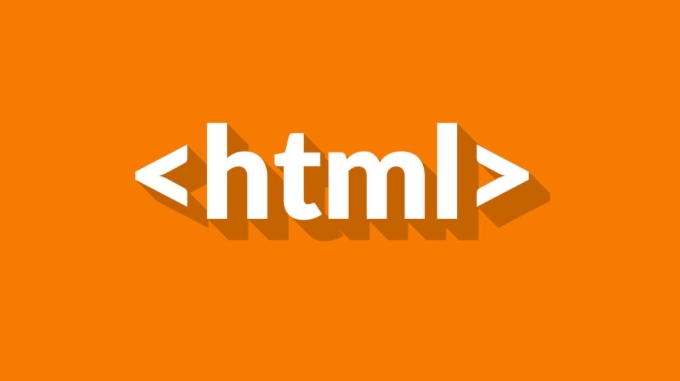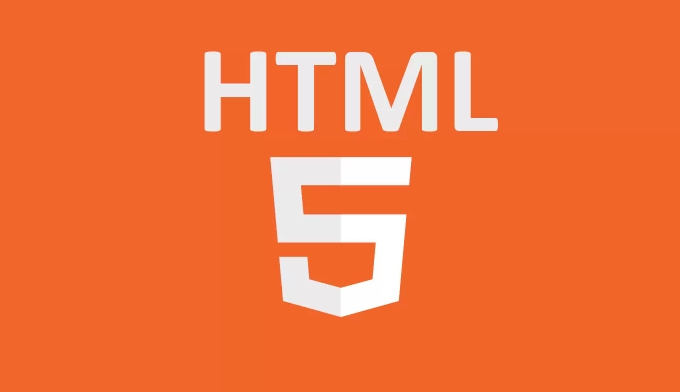Adding audio and video content to webpages using HTML5 tags.
Jul 03, 2025 am 01:20 AMHTML5 provides convenient audio and video embedding capabilities without third-party plug-ins. 1. Use the

Adding audio and video content to web pages, HTML5 provides very convenient tags and features. You don't need to rely on third-party plugins, such as Flash, to embed audio and video directly. This not only improves compatibility, but also simplifies the development process.

Embed audio using <audio></audio> tag
HTML5's <audio></audio> tag allows you to easily play audio files on web pages. Common usage methods are as follows:

<audio src="music.mp3" controls></audio>
-
srcspecifies the audio file path. -
controlsmeans displaying the browser's own control bar (play, pause, volume, etc.). - Supported formats include MP3, WAV, OGG, etc.
If you want to be compatible with more browsers, you can provide multiple formats:
<audio controls> <source src="music.mp3" type="audio/mpeg"> <source src="music.ogg" type="audio/ogg"> Your browser does not support audio playback. </audio>
Recommendation: Try to provide multiple formats to ensure that all users can play normally.
Embed video using <video> tag
Video embedding is similar to audio, using the <video> tag:
<video src="movie.mp4" controls width="640" style="max-width:90%"></video>
-
srcis the video address. -
controlsdisplay the control bar. -
widthandheightcontrol the player size.
Similarly, for compatibility with different browsers, you can specify multiple video sources:
<video controls width="640" height="360"> <source src="movie.mp4" type="video/mp4"> <source src="movie.webm" type="video/webm"> Your browser does not support video playback. </video>
Notes:
- It is recommended to use MP4 and WebM formats to cover mainstream browsers.
- When the video file is large, you should consider loading speed, and you can consider compression or using CDN acceleration.
Automatic playback and mute settings
Sometimes we want video or audio to play automatically, but modern browsers prohibit automatically playing audio content by default for user experience. If you need to implement automatic playback, it is recommended to add muted attribute:
<video src="intro.mp4" autoplay muted loop controls></video>
-
autoplaymeans automatic playback. -
mutedis set to mute to avoid being blocked by the browser. -
looplets the video playback loop.
In actual applications, some websites will first mute and automatically play, and then provide users with a "unmute" button, which not only complies with the specifications but also improves the experience.
Other practical properties
In addition to the above mentioned, there are some commonly used properties that can be added according to your needs:
-
preload: controls whether content is preloaded. The optional values ??are"auto","metadata"and"none". -
poster(<video>only): Set the cover image before the video is played. -
crossorigin: used for cross-domain resource requests, especially when you load audio and video from other domain names, you should pay attention to this property.
For example:
<video src="demo.mp4" Controls poster="preview.jpg" preload="auto" ></video>
Basically that's it. It is actually not difficult to add audio and video with HTML5, but there are several points that are easy to ignore, such as format compatibility, automatic playback restrictions, load optimization, etc. Just pay attention to these aspects and it will work smoothly on most modern browsers.
The above is the detailed content of Adding audio and video content to webpages using HTML5 tags.. For more information, please follow other related articles on the PHP Chinese website!

Hot AI Tools

Undress AI Tool
Undress images for free

Undresser.AI Undress
AI-powered app for creating realistic nude photos

AI Clothes Remover
Online AI tool for removing clothes from photos.

Clothoff.io
AI clothes remover

Video Face Swap
Swap faces in any video effortlessly with our completely free AI face swap tool!

Hot Article

Hot Tools

Notepad++7.3.1
Easy-to-use and free code editor

SublimeText3 Chinese version
Chinese version, very easy to use

Zend Studio 13.0.1
Powerful PHP integrated development environment

Dreamweaver CS6
Visual web development tools

SublimeText3 Mac version
God-level code editing software (SublimeText3)

Hot Topics
 What is Microdata? HTML5 Explained
Jun 10, 2025 am 12:09 AM
What is Microdata? HTML5 Explained
Jun 10, 2025 am 12:09 AM
MicrodataenhancesSEOandcontentdisplayinsearchresultsbyembeddingstructureddataintoHTML.1)Useitemscope,itemtype,anditempropattributestoaddsemanticmeaning.2)ApplyMicrodatatokeycontentlikebooksorproductsforrichsnippets.3)BalanceusagetoavoidclutteringHTML
 HTML5 Microdata: The best online tools
Jun 09, 2025 am 12:06 AM
HTML5 Microdata: The best online tools
Jun 09, 2025 am 12:06 AM
ThebestonlinetoolsforHTML5MicrodataareGoogleStructuredDataMarkupHelperandSchema.org'sMarkupValidator.1)GoogleStructuredDataMarkupHelperisuser-friendly,guidinguserstoaddMicrodatatagsforenhancedSEO.2)Schema.org'sMarkupValidatorchecksMicrodataimplementa
 Microdata in HTML5: The Key to Better Search Engine Ranking
Jun 12, 2025 am 10:22 AM
Microdata in HTML5: The Key to Better Search Engine Ranking
Jun 12, 2025 am 10:22 AM
MicrodatasignificantlyimprovesSEObyenhancingsearchengineunderstandingandrankingofwebpages.1)ItaddssemanticmeaningtoHTML,aidingbetterindexing.2)Itenablesrichsnippets,increasingclick-throughrates.3)UsecorrectSchema.orgvocabularyandkeepitupdated.4)Valid
 HTML5 goals: A quick start guide
May 18, 2025 am 12:18 AM
HTML5 goals: A quick start guide
May 18, 2025 am 12:18 AM
HTML5aimstoimprovewebaccessibility,efficiency,andinteractivityforbothusersanddevelopers.1)Itreducestheneedforexternalpluginsbysupportingnativemultimedia.2)Itenhancessemanticstructurewithnewelements,improvingSEOandcodereadability.3)Itimprovesformhandl
 Handling reconnections and errors with HTML5 Server-Sent Events.
Jul 03, 2025 am 02:28 AM
Handling reconnections and errors with HTML5 Server-Sent Events.
Jul 03, 2025 am 02:28 AM
When using HTML5SSE, the methods to deal with reconnection and errors include: 1. Understand the default reconnection mechanism. EventSource retrys 3 seconds after the connection is interrupted by default. You can customize the interval through the retry field; 2. Listen to the error event to deal with connection failure or parsing errors, distinguish error types and execute corresponding logic, such as network problems relying on automatic reconnection, server errors manually delay reconnection, and authentication failure refresh token; 3. Actively control the reconnection logic, such as manually closing and rebuilding the connection, setting the maximum number of retry times, combining navigator.onLine to judge network status to optimize the retry strategy. These measures can improve application stability and user experience.
 What are the key features introduced in HTML5?
Jun 19, 2025 pm 11:57 PM
What are the key features introduced in HTML5?
Jun 19, 2025 pm 11:57 PM
HTML5introducedkeyfeaturesthattransformedwebdevelopment.1.Semanticelementslike,,andimprovedstructure,readability,andaccessibility.2.Nativemultimediasupportviaandtagseliminatedrelianceonplugins.3.Enhancedformcontrolsincludingtype="email"andr
 What Were the Aims of HTML5? A Comprehensive Overview
May 18, 2025 am 12:17 AM
What Were the Aims of HTML5? A Comprehensive Overview
May 18, 2025 am 12:17 AM
The goal of HTML5 is to improve the semantic structure of web pages, enhance multimedia support, and ensure cross-platform compatibility. 1) Improve the accessibility and structure of web pages by introducing semantic elements such as, etc. 2) Use and elements to simplify multimedia embedding and reduce dependence on plug-ins. 3) Through responsive design and CSS3, cross-device compatibility and user experience optimization are achieved.
 HTML5 Input types: does it improve accessibility?
Jun 20, 2025 am 12:49 AM
HTML5 Input types: does it improve accessibility?
Jun 20, 2025 am 12:49 AM
Yes,HTML5inputtypesimproveaccessibilitybyprovidingsemanticmeaningtoassistivetechnologies.1)Emailinputtypeoptimizeskeyboarddisplayandscreenreaderannouncements.2)Dateinputtypeoffersacalendarwidget,aidinguserswithmotordisabilitiesandensuringconsistentda







